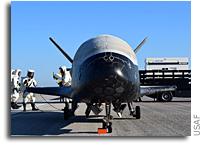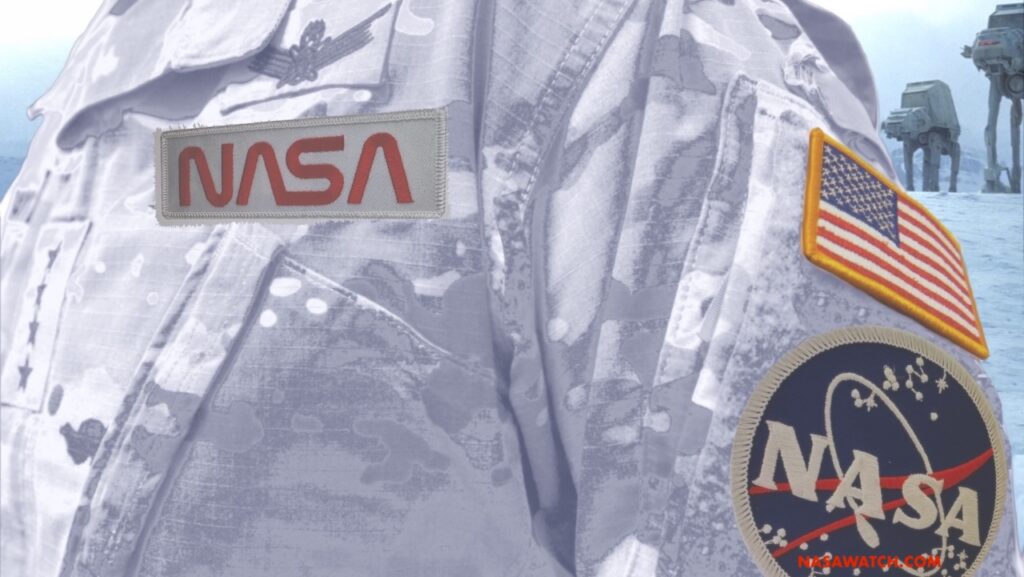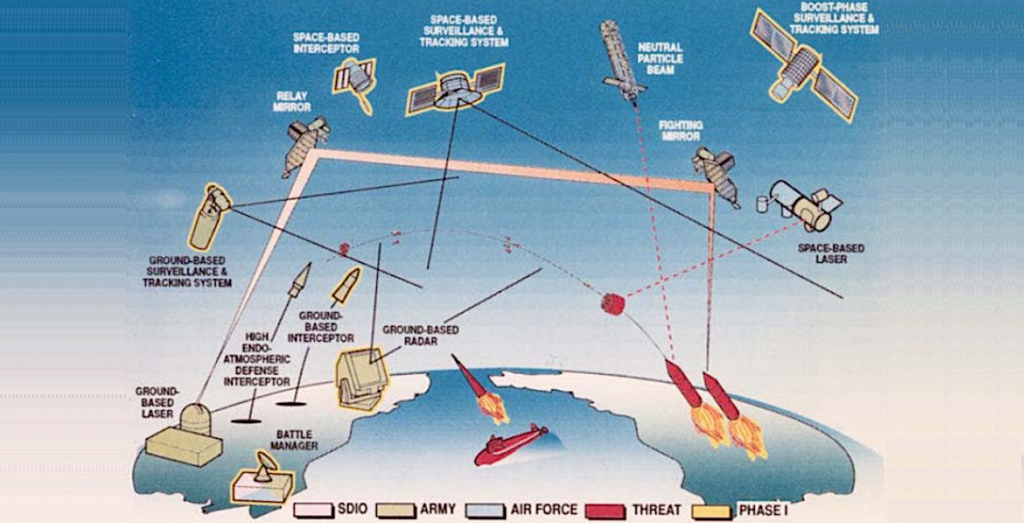X-37B Lands at KSC

X-37B Orbital Test Vehicle-4 Lands, USAF (with video)
“The X-37B Orbital Test Vehicle mission 4 (OTV-4), the Air Force’s unmanned, reusable space plane, landed at NASA’s Kennedy Space Center Shuttle Landing Facility May 7, 2017. “Today marks an incredibly exciting day for the 45th Space Wing as we continue to break barriers,” said Brig. Gen. Wayne Monteith, the 45th SW commander. “Our team has been preparing for this event for several years, and I am extremely proud to see our hard work and dedication culminate in today’s safe and successful landing of the X-37B.” The OTV-4 conducted on-orbit experiments for 718 days during its mission, extending the total number of days spent on-orbit for the OTV program to 2,085 days.”









Sigh. So elegant compared to other methods of recovery…
True, but elegant does not necessarily equate to affordable. Usually elegant equates to complicated (in this case landing gear with wheels/tires, aerodynamic surfaces, complex TPS, complex control systems, and etc).
That said, competition in this area is a good thing.
It is nowhere near as elegant as it appears to be. Keep in mind that most of the launch mass is totally thrown away. The X-37B is launched by an Atlas V, which is not reusable.
There is nothing wrong with winged entry, and the X-37 is the first vehicle to actually build on the lessons of Shuttle. The delta wing provides lift at the extreme angle of attack essential to a controllable entry, but placing the wing amidships with a separate tail provides much better pitch trim control than was possible with the Shuttle, avoiding the latter’s chronic sensitivity to CG and need for ballast. The fuselage area is narrower than a lifting body but the lift to drag ratio is better. Even the V-tail avoids the complex elevon-wing joints and the fuselage penetrations are behind the fuselage during entry and protected from excessive heating. The vertical tail, which is outside the supersonic airstream and thus ineffective during entry, is gone.
That said, Musk noted that both the booster and the spacecraft already must carry engines and fuel (the latter for launch abort) so landing with propulsive lift adds relatively little complexity and is weight-competitive with winged entry. Crossrange is smaller but landing zones are much simpler.
Cost correlates with complexity much more than cost correlates with size. But unfortunately launch vehicle designers quite often get caught up in minimizing dry mass of a launch vehicle instead of minimizing overall cost. This may be o.k. if you can pass the costs on to the customer, but it’s not o.k. if your competition is aggressively minimizing cost.
I agree, cost is king. The added mass of the actual wings and tail of the X-37 are no greater than the fuel that would be needed for propulsive landing. However the narrow fuselage of the X-37 allows less internal voulme than a simple rounded capsule of about the same mass and cost like the Dragon spacecraft. The tradeoff is nontrivial. We can’t let our emotional reaction to the fine lines of the X-37 overcome objectivity.
In any case, propulsive landing gives many more options not open to airstrip-requiring gliders.
But this left me wondering:
Given my lack of technical knowledge (and your nice run-down, above, on related issues), I still want to ask how you know that statement to be true? It’s quite broad.
Recently, discussion revealed that the fuel penalty for F9’s return to site is around 30%. A huge number but one that is derived from experience.
I believe the fuel penalty for F9 to GTO is 33% but the Falcon Heavy GTO fuel penalty is 70%.
We really don’t have much data on the Falcon Heavy, and recovery of all three lower stages would be very different from recovery of the two on the sides while expending the core.
After the recent discussion, I thought of a better was to estimate the cost of Falcon 9 recoveries. The SpaceX web site lists 8300 kg as the maximum payload to a geostationary transfer orbit, with no recovery. 5300 kg (SES-10) is the heaviest payload to GTO where recovery was attempted. For a 5600 kg payload (EchoStar 23), they did not attempt a recovery. (All numbers for the FT configuration.) So the maximum payload with recovery is probably between 5300 and 5600 kg, or around 65% of the advertised maximum without recovery.
As for X-37B and wings, the issues go beyond reuse of the spacecraft. Wings allow much more cross-track range, which is something the Air Force insisted on for the Shuttle, and also a much greater capability to return payloads to Earth. The Shuttle could bring back almost as much as it could take up. If those capabilities are something you care about, then a lower payload to orbit might be acceptable.
More importantly, the extra tankage to carry fuel and oxidizer for landing adds minimal complexity to the launch vehicle or reentry vehicle and therefore there is minimal added cost to build, maintain, and operate the vehicle.
For example, on Falcon 9’s first stage you need the engines anyway for launch, so making them do double-duty for landing doesn’t add much complexity. But, the landing gear and especially the grid fins add complexity. The landing gear was expected, but they’re relatively simple “deploy only once” type mechanisms. The grid fins were added after landing attempts without them failed and they’re a bit more complex as they are both deployed, and then actively steered during flight. So there was added, unanticipated, complexity on Falcon 9. In other words, sometimes “simple” doesn’t turn out to be as simple as you’d really like.
But, when you add wings, aerodynamic surfaces, actuators, landing gear with wheels, and some sort of brakes (chutes or brakes on the wheels) to the same sort of vehicle, you really do increase the complexity by quite a bit. I’d argue by quite a bit more than adding landing legs and grid fins. All of this added complexity leads to increased costs to build, maintain, and operate the vehicle.